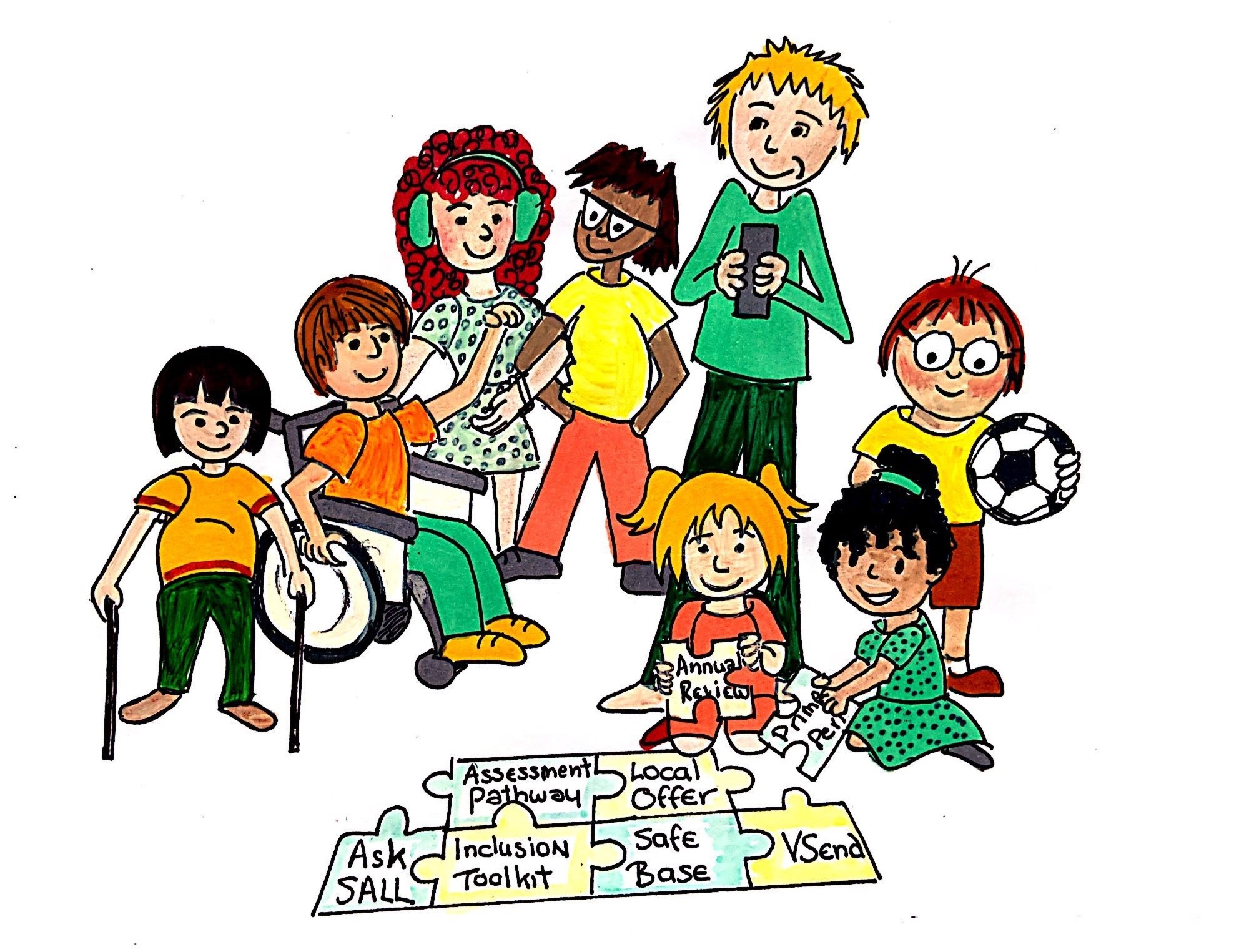Level 5-6 what you may notice
0-5
The child is diagnosed as having severe vision loss (within the range of 6/36 to 6/60). The child needs to use assistive technology and accesses to short programmes of habilitation training where necessary to ensure age related levels of independence are maintained. The child will have regular contacts from a Qualified Teacher for children and young people with a Vision Impairment (QTVI) from SEST.
- vision loss classified as severe
- physical independence is likely to be impaired by visual impairment and requires assessments and programmes from relevant professionals
- may need to access their learning through large print or tactile resources
- the vision impairment may have a severe impact on a learner’s ability to function independently in the setting environment
- will need enhanced adult support to fully access the EYFS curriculum
- may take longer to complete tasks, often in a different medium
- may need help with social interactions with their peers and find it difficult to maintain positive self- esteem and social confidence
- may need support to fully develop an understanding of others and maintain positive relationships with peers
- without specialist support they will be at high risk of not achieving and maintaining levels of attainment in keeping with their age and abilities or making expected progress
5-16
The pupil is diagnosed as having moderate to severe vision loss (within the range of 6/36 to 6/60). The pupil needs to use assistive technology to enable access to the curriculum. The pupil accesses short programmes of habilitation training where necessary to ensure age related levels of independence are maintained. The pupil will have regular contacts from a Qualified Teacher for children and young people with a Vision Impairment (QTVI) from SEST.
- may need to access their learning through large print or braille
- the vision impairment may have a severe impact on a learner’s ability to function independently in the school environment
- may need a high level of adult support in order to access the curriculum
- may need all texts and diagrams produced in a tactile format and may need high level of teaching of Braille outside the classroom environment
- may take longer to complete tasks, often in a different medium
- mayy need help with social interactions with their peers and find it difficult to maintain positive self- esteem and social confidence
- may need support to fully develop an understanding of others and maintain positive relationships with peers
- without specialist support they will be at high risk of not achieving and maintaining levels of attainment in keeping with their age and abilities or making expected progress


